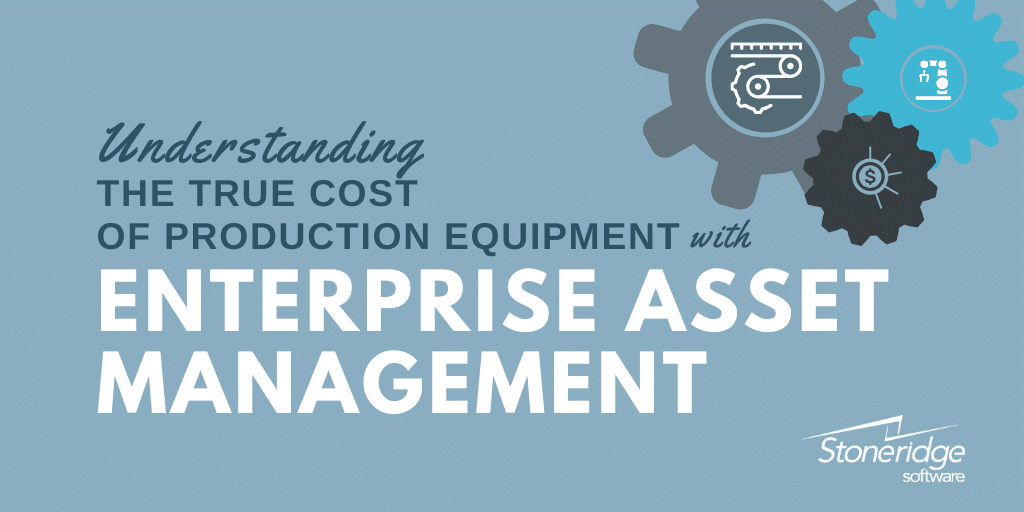Understanding the True Cost of Production Equipment with Enterprise Asset Management

The number of assets that a manufacturing company relies on to continue production is far beyond what a single employee, or even a team of people, can manually track and manage. By implementing a software solution like Dynamics 365 that allows you to effectively manage your manufacturing assets, you can predict when machines need repairs, understand the true cost of production, and produce orders on time.
Understanding the true cost of your production equipment and evaluating product pricing centers around the five key areas of effective enterprise asset management.
Tracking Depreciation
Many investments that your company makes to address business issues, streamline processes, or increase the scale and quality of your offerings can be capitalized into fixed assets. Many systems already exist to allow for you to depreciate these fixed assets over a period of time, but many of these systems are also external to your core business systems that drive other operational processes such as manufacturing and distribution. By integrating the depreciation capabilities within Dynamics 365 you are able to quickly and easily understand the true costs associated with production, distribution, and even project-related overhead through the use of these fixed assets and the related depreciation models assigned.
Warranty Management
Tracking warranty information for each piece of equipment or machinery helps your maintenance team understand where each asset was purchased from, warranties or guarantees from the manufacturer in case of break down or disrepair. Having easy access and visibility into these details helps move your repairs forward faster.
Work Orders
When a machine is in need of repair, the system automatically generates a maintenance work order and internally dispatches a technician to work on the machine. Each work order can be customized to include pertinent information such as:
- Specific machine details
- Repair information
- Parts required
- Time to complete repair
- Expense of time
This information is again fed back into the system and tied to the specific piece of equipment, updating the full cost of the machine over its lifetime.
Once the work order is generated, the machine is automatically blocked off the schedule so your team can accurately calculate production capacity when taking into consideration equipment downtime. This also helps you to understand how to reallocate the work to other machines or lines on the floor.
Work orders can also be aligned to the right resources that you have on-staff based upon their skills and certifications which results in regulatory compliance for some industries, as well as operational efficiency gains when dispatching resources for products that have very specific capabilities that the general team may not be certified to address.
Preventative Maintenance
Avoiding unexpected maintenance is key to keeping production running at full capacity. With predictive maintenance capabilities, Dynamics 365 automatically schedules maintenance activities based on history and pre-set requirements. For example, when a piece of machinery is purchased, you can set up a monthly cadence for the filter to be replaced. Dynamics 365 will continue to generate work orders so this action is completed on the pre-set schedule over the life of the machine. This history is stored within the system and tied to each machine.
Predictive Maintenance
Predictive maintenance capabilities in Dynamics 365 allow you to proactive rather than reactive. The system will alert you when a machine is at risk of failure based on historical patterns of similar machines on the floor. A work order is automatically generated so your team can check machines or components for failures before they occur. Time is blocked off in the production lifecycle automatically when these work orders are generated, helping to keep your forecast and production on time.
The cost of maintaining each machine directly affects your product pricing. By managing the data points from predictive maintenance, downtime events, and preventative maintenance, you can gain a complete understanding of the actual cost of purchasing and running each machine. Additionally, you can use this data to determine the average lifecycle for each machine and budget more effectively for new assets.
Under the terms of this license, you are authorized to share and redistribute the content across various mediums, subject to adherence to the specified conditions: you must provide proper attribution to Stoneridge as the original creator in a manner that does not imply their endorsement of your use, the material is to be utilized solely for non-commercial purposes, and alterations, modifications, or derivative works based on the original material are strictly prohibited.
Responsibility rests with the licensee to ensure that their use of the material does not violate any other rights.





